AMD Gaming Platform
When we leave the budget sector behind and start looking at midrange configurations, the amount of customization that can be done becomes far more significant. We basically doubled our budget, but that doesn't mean you actually have to spend anywhere near $1500 to get a reasonable midrange configuration. It should be quite easy to cut back a few areas in order to get the price closer to $1000, if that's the target budget. For the AMD platform, we decided to focus on putting together a good gaming solution.
| AMD Gaming System |
| Hardware |
Component |
Price |
Rebates |
| Processor |
Athlon 64 X2 4800+ (Windsor 2.5GHz 2x512K) - Retail |
$133 |
|
| Motherboard |
EVGA 122-M2-NF59-TR (Socket AM2 nForce 590 SLI) |
$136 |
$30 |
| Memory |
Transcend JETRAM 2x1GB DDR2-800 (5-5-5-12 JM2GDDR2-8K) |
$113 |
|
| Video Card |
Foxconn GeForce 8800GTS 640MB (FV-N88SMBD2-ONOC) |
$400 |
$40 |
| Hard Drive |
Seagate Barracuda 7200.10 ST3320620AS 320GB 16MB |
$80 |
|
| Optical Drive |
Pioneer Black DVR-112D 18X DVD+R |
$38 |
|
| Case |
Athenatech A5719BB.500 with 500W PSU |
$106 |
$20 |
| Display |
Acer AL2216Wbd 22" 5ms (1680x1050) |
$274 |
|
| Speakers |
Logitech X-530 5.1 70W Speakers |
$74 |
|
| Keyboard and Mouse |
Microsoft Comfort Curve 2000 B2L-00047 |
$28 |
|
| Operating System |
Windows MCE 2005 or Vista Home Premium (OEM) |
$115 |
|
| Bottom Line |
|
$1497 |
$1407 |
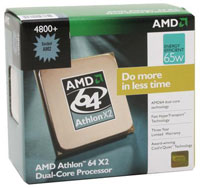 |
CPU performance can still be a factor in many games, particularly RTS games where lots of units might be in action at the same time, but graphics horsepower is still far more important in the majority of titles. We made a moderate upgrade to the processor selection, going with the Athlon X2 4800+. That should offer more than enough power for any current games, and it leaves us plenty of money to spend on the GPU. Overclocking is always an option, although most AMD AM2 processors seem to top out in the range of 2.6-2.8GHz so we would either go with a less expensive CPU for overclocking purposes or else simply spend the extra money in order to get a guaranteed minimum performance. If you want something faster than a 4800+ and you don't want to move to Core 2 Duo, the 5400+ is worth a serious look. Priced at $200, that processor comes with 1MB of L2 cache per core and a default clock speed of 2.8GHz - basically what used to be the $1000 FX-62. Just don't expect it to greatly improve your gaming performance except at lower resolutions/detail settings.
 |
For the motherboard, looking at prices we decided the ability to support dual X16 PCI-E slots was a reasonable addition, as the price isn't much higher than the dual X8 PCI-E alternatives. The nForce 590 SLI chipset has been well-regarded since its launch last year, and prices on such boards have dropped substantially. This also gives us the option to move up to SLI graphics cards in the future to improve performance, and while that tends to be beyond the realm of midrange computers it's not inconceivable that some people will want to spend a couple hundred dollars a year from now to improve performance. Taking a look at the current 590 SLI motherboard offerings, EVGA comes out on top with some of the best features while maintaining the lowest price - under $100 after rebate! The EVGA motherboard is actually the same reference design as the Foxconn nForce 590 SLI board that garnered our Silver Editors' Choice award last year, right down to the inclusion of FireWire 1394b support, and it costs $35 less than the Foxconn board before rebates.
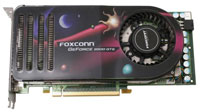 |
As we mentioned, the graphics card is going to be the primary concern in just about any gaming system. Right now, without blowing our budget by moving up to the 8800 GTX, the GeForce 8800 GTS is the most reasonable solution. Having settled on that chip, you then need to decide whether you want to get the more expensive 640MB version or stick with the basic 320MB offering. There are several games out that are using a lot of textures, which can start taxing 512MB cards, so opting for the larger memory version seems to make the most sense in terms of serious gaming. It's also a lot easier to find factory overclocked cards in the 640MB models without paying too much of a price premium. The Foxconn 8800 GTS comes clocked at 575/1800 (stock is 500/1600) and after rebates it ties several other cards as being the cheapest 8800 GTS 640MB. Lowest priced card with higher factory clock speeds? We'll take it, especially considering all of the GeForce 8800 cards use the same NVIDIA supplied circuit board, so the only real differences will be factory clock speeds, warranty/support, and potentially modified cooling solutions. XFX and EVGA may come with better warranty policies, but Foxconn certainly isn't a bad company to deal with in our experience.
Before you rush out and purchase this particular graphics card, however, it is worth noting that AMD's new Radeon X2900 XT/XTX cards are scheduled to launch in the next month. The rumors have it that these cards will offer performance better than the 8800 GTX at prices starting around $400 for the XT model. Whether or not the availability and drivers are going to be up to snuff is a complete unknown - NVIDIA is still working on G80 driver issues, particularly in regards to Windows Vista, and we don't have any DirectX 10 enabled games yet - but it certainly wouldn't hurt to wait another month and see what happens. Should you choose to get one of the new AMD graphics cards, you might also want to skip the EVGA SLI board and pick up an ASUS M2R32-MVP 580X CrossFire enabled motherboard instead.
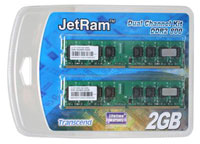 |
For the memory, this time we did upgrade to 2GB of RAM. We didn't bother with anything fancy - 5-5-5-12 memory is only a few percent slower than 4-4-4-12 memory and costs quite a bit less - and again we are quite pleased to see that memory prices have dropped a long way since the beginning of the year. Transcend JETRAM is one of the many memory providers that offers "average" performance. If you're looking to set speed or overclocking records, you could certainly spend more money and get RAM that is capable of running at much higher clock speeds with better timings, but for the cost you would be far better off spending the extra money on a faster graphics card or processor first. We generally only recommend exotic memory solutions for the high-end market.
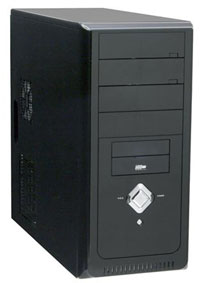 |
Most of the remaining components have received minor upgrades relative to our entry level configurations. The hard drive is slightly larger, we chose 5.1 speakers, and we selected a different case with a "more powerful" power supply. The power supply probably isn't all that great, but if you aren't going to push your system with overclocking, multiple graphics cards, or a bunch of hard drives the 500W PSU included with the Athenatech case will work fine.
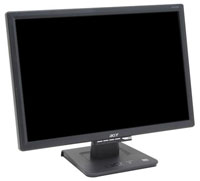 |
The display once again presented us with a dilemma: do we want to go with a higher quality offering or do we want a larger display? In reality, most of the 22" and smaller LCDs tend to have fewer features and lower quality. For example, TN panels are standard on every 22" LCD we've seen so far, and they are also used on most of the other smaller displays. It's possible to find S-PVA panels on some of the 20" displays, but you will end up paying more than the 22" Acer that we selected. The AL2216W is a decent quality display, and the price makes it particularly attractive. Acer also has a newer and slightly less expensive AL2223W offering, although that is a 6-bit panel that approximates 16.2 million colors via dithering whereas the AL2216W is an 8-bit panel.
















46 Comments
View All Comments
Zepper - Monday, April 23, 2007 - link
You don't have to pay a lot for a decent PSU. The iStar TC-350PD1 is under $40 right now on sale. Even Athenatech has some lower end cases with Fortron/Sparkle PSUs. But you don't act like PSUs are important when testing them separately and then turn around and recommend a junk-bucket even for a budget system..bh.
JarredWalton - Tuesday, April 24, 2007 - link
The case + PSU is $65 shipped. It's actually a pretty decent looking case as well, all told. Now, the iStar costs about $45 shipped at eWiz, which means that you need to find a $20 case that you're happy with or else spend more money. I freely admit that I skimp on PSUs on budget systems, but that's really nothing too surprising. An $80 motherboard with IGP is "skimping", 1GB of RAM is "skimping", etc. They'll all still work fine for most people, but anyone looking to add a GPU, better PSU, etc. quickly vaults into the midrange prices.I supported Dell PCs for several years at another job, and I think they skimp at least as much as anything I've listed here. One year, almost all PCs were fine. Between 12 and 24 months, we had probably 10% fail, many with motherboards and several with PSUs. Past two years, I think the failure rate was approaching 20%, again on mobos and PSUs primarily. I feel a lot worse about cutting costs and quality on a motherboard than I do about going with cheaper PSUs, at least in the budget sector.
JarredWalton - Tuesday, April 24, 2007 - link
Oh, and for that matter I think the LCDs on the low end are suspect as well. I tried to go with ones that are getting favorable ratings, but a lot of people basically seem to say, "Wow - LCDs look cool and it only cost $180! 5 stars!" The thing is, for people that don't go beyond that sort of critique, it probably *is* a five star LCD! That's the same with PSUs and cases. I don't think any serious enthusiast is going to build a decent PC using a budget case and PSU.For the record, the few times I've used Raidmax cases and PSUs (whatever brand they happened to be), I have never had a complaint. Both systems are still running (Athlon XP 2500+) after four years or so. Not bad for a cheap $65 case and PSU. Was I just lucky? Maybe, but that's my experience with budget systems and Raidmax cases. (And also for the record, the people I built those PCs for thought the case looked "l33t" and specifically chose it; I thought it looked gaudy and stupid. No accounting for taste.)
jay401 - Friday, April 20, 2007 - link
That would be the E6320 and E6420. The 50 series doesn't come out until August and will sport higher clockspeeds and higher FSB (1333MHz).
And the question: Any word yet if the Ultra 120 Extreme has been updated to address the concern you guys listed in the review (something about a bracket when trying to mount it on s775 boards)?
Thanks!
redbone75 - Saturday, April 21, 2007 - link
I actually saw the E6320 and E6420 available at Newegg.com on thursday night. Strangely enough they aren't listed there tonight. Both processors are available at zipzoomfly.com, though.jay401 - Friday, April 20, 2007 - link
Dear AMD,This is the final proof you have delayed your R600 GPU series for too long: You didn't even get them out in time for the rarely seen Anandtech Buyer's Guide!
Sincerely,
Disappointed in Delaware
:D